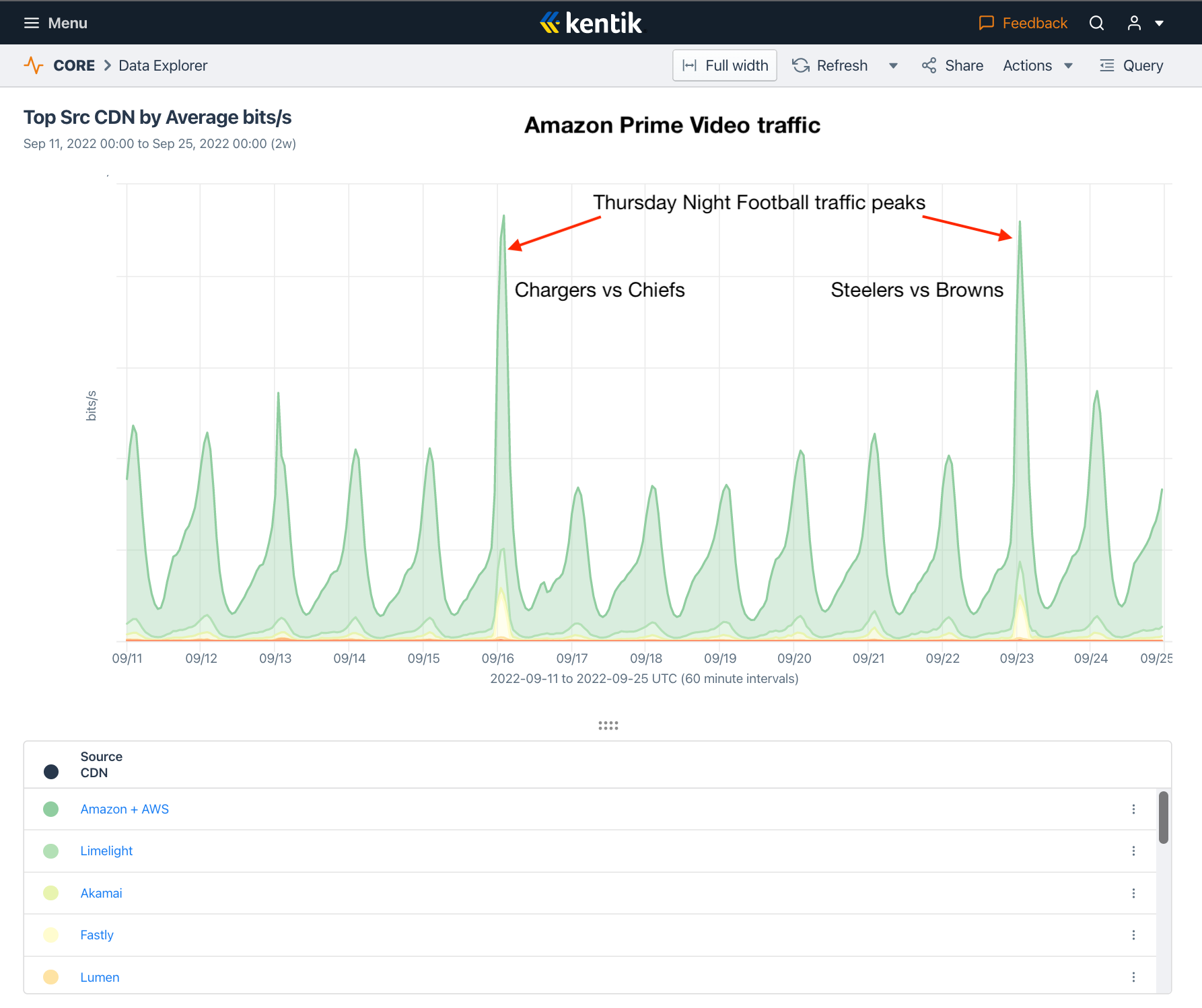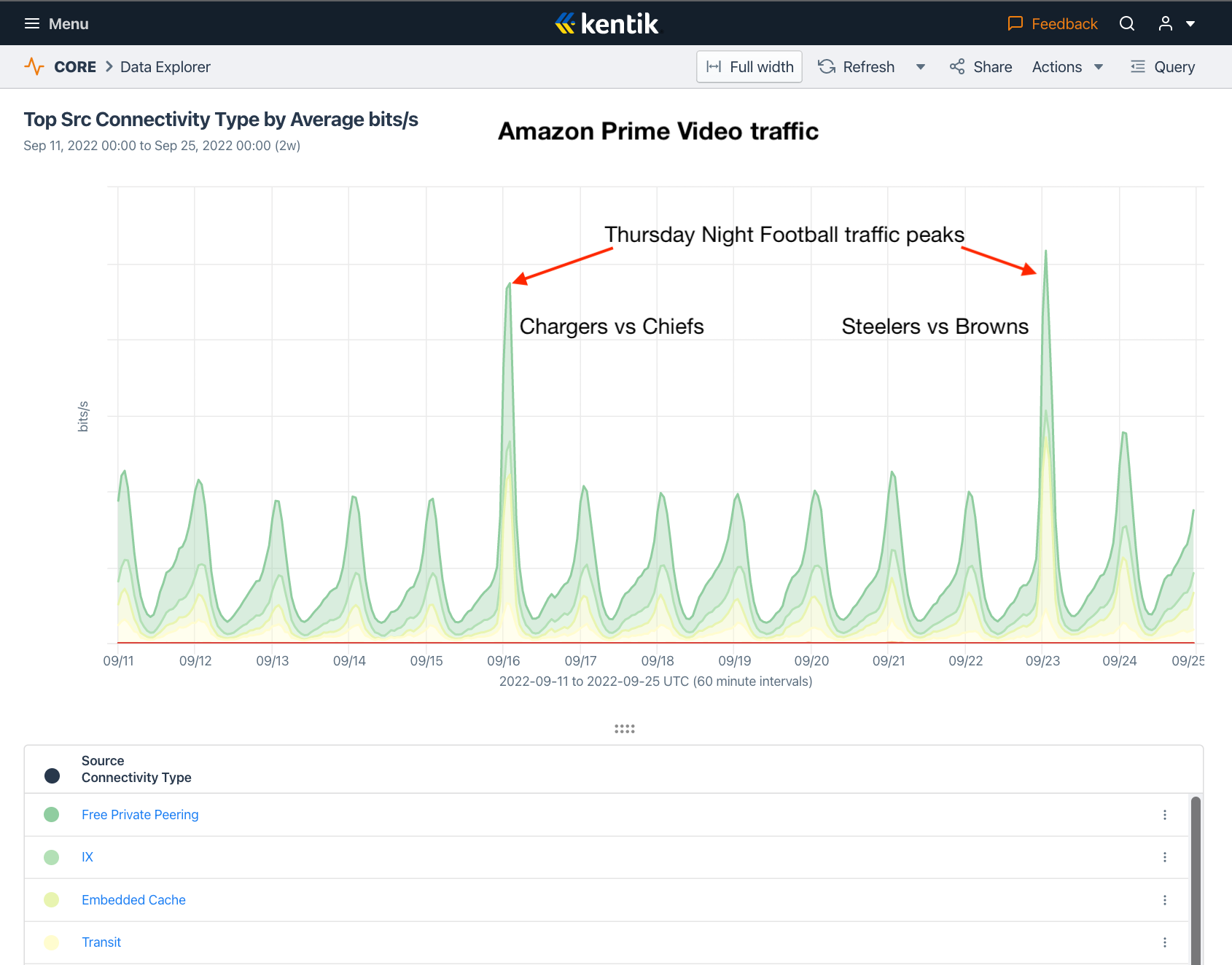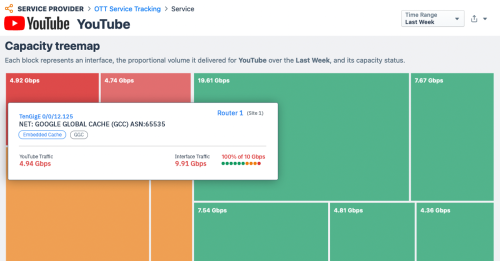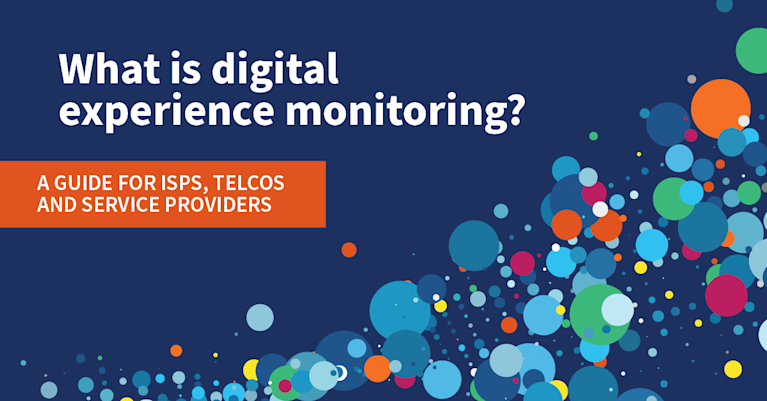Anatomy of an OTT traffic surge: Thursday Night Football on Amazon Prime Video


Summary
This fall Amazon Prime Video became the exclusive broadcaster of the NFL’s Thursday Night Football. This move continued Prime Video’s push into the lucrative world of live sports broadcasting. As you can imagine, these games have led to a surge in traffic for this OTT service.
This fall Amazon Prime Video became the exclusive broadcaster of the NFL’s Thursday Night Football. This move continued Prime Video’s push into the lucrative world of live sports broadcasting.
While they had previously aired TNF, as it is known, this is the first season Amazon Prime Video has exclusive rights to broadcast these games. As you can imagine, airing these games has led to a surge in traffic for this OTT service.
OTT Service Tracking
Kentik’s OTT Service Tracking (part of Kentik Service Provider Analytics) combines DNS queries with NetFlow to allow a user to understand exactly how OTT services are being delivered — an invaluable capability when trying to determine what is responsible for the latest traffic surge. Whether it is a Call of Duty update or a Microsoft Patch Tuesday, these OTT traffic events can put a lot of load on a network and understanding them is necessary to keep a network operating at an optimal level.
The capability is more than simple NetFlow analysis. Knowing the source and destination IPs of the NetFlow of a traffic surge isn’t enough to decompose a networking incident into the specific OTT services, ports, and CDNs involved. DNS query data is necessary to associate NetFlow traffic statistics with specific OTT services in order to answer questions such as, “What specific OTT service is causing my peering link with a certain CDN to become saturated?”
Kentik True Origin is the engine that powers OTT Service Tracking workflow. True Origin detects and analyzes the DNA of over 540 categorized OTT services and providers and more than 50 CDNs in real time, all without the need to deploy DPI (deep packet inspection) appliances behind every port at the edge of the network.
🎶 Are you ready for some caching? 🎶
In these days of an endlessly fractured media landscape, professional football remains a ratings powerhouse in the United States, consistently drawing in audiences numbered in the millions.
As illustrated below in a screenshot from Kentik’s Data Explorer view, Amazon Prime Video traffic dramatically surged during the previous two Thursday evenings. If traffic volume can indicate viewership, then broadcasting Thursday Night Football more than doubled the number of households watching Amazon Prime Video.

Perhaps more interesting is the breakdown in source CDNs: not all traffic was delivered via Amazon Prime Video’s sister business unit Amazon Web Services (AWS). While we saw AWS delivering the majority of the traffic, also in the CDN mix were Edgio (Limelight), Akamai, Fastly, and Lumen.
The graphic below shows how Amazon Prime Video was delivered during this two-week period. By breaking down the traffic by Source Connectivity Type (below), we can see how TNF was delivered by a variety of sources including private peering, IXP, embedded cache, and transit. For the game on September 22nd, the connectivity source breakdown was embedded cache (42.7%), private peering (40.4%), IXP (8.5%), and transit (8.4%).

It is normal for CDNs with a last mile cache embedding program to heavily favor this mode of delivery over other connectivity types as it allows:
- The ISP to save transit costs
- The subscribers to get demonstrably better last-mile performance
In addition to source CDN and connectivity type, users of Kentik’s OTT Service Tracking are also able to break down traffic volumes by subscribers, specific router interfaces, and customer locations.
How does OTT Service Tracking help?
In July, my colleague Greg Villain described the latest enhancements to our OTT Service Tracking workflow which allows providers to plan and execute what matters to their subscribers, including:
- Maintaining competitive costs
- Anticipating and fixing subscriber OTT service performance issues
- Delivering sufficient inbound capacity to ensure resilience
Major traffic events like the release of a blockbuster movie on streaming can have impacts in all three areas. OTT Service Tracking is the key to understanding and responding when they occur. Learn more about the application of Kentik for network business analytics here.
Ready to improve over-the-top service tracking for your own networks? Get a personalized demo.


